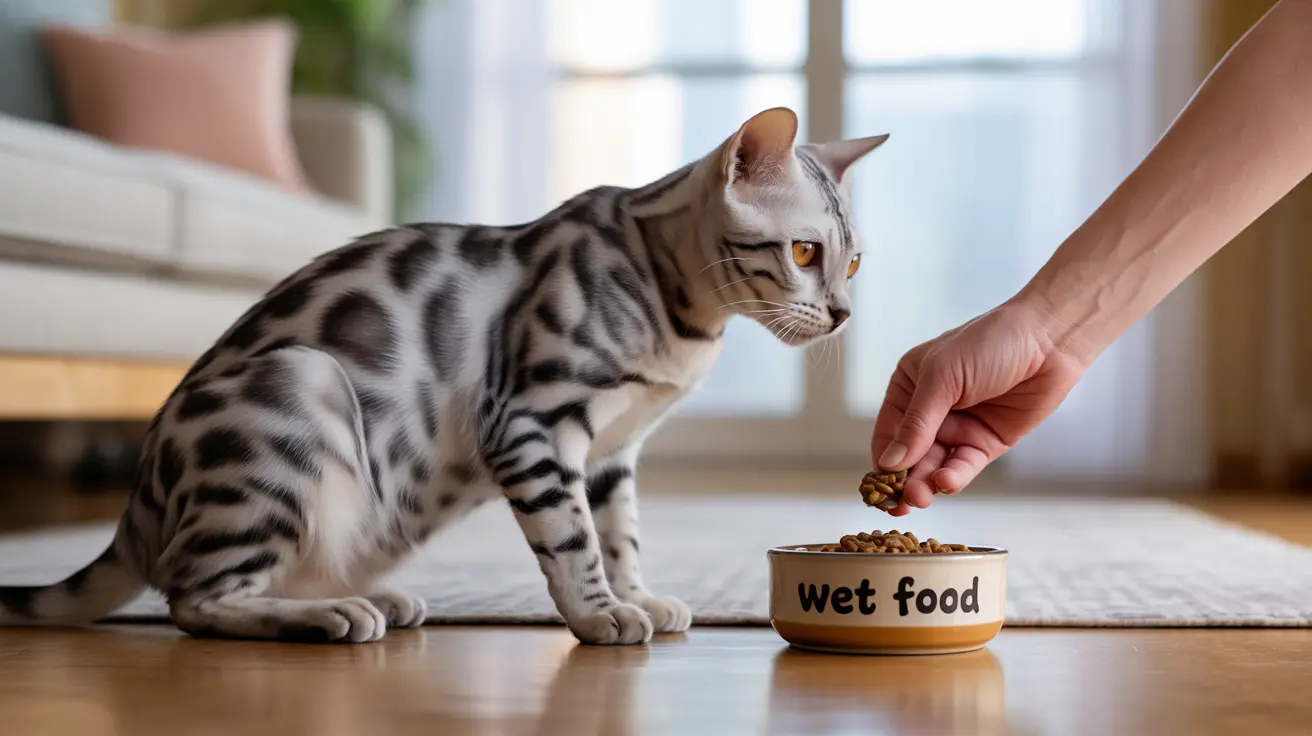If you're considering switching your cat from dry to wet food, you might wonder about its impact on their bathroom habits. The short answer is yes - cats typically do poop less on wet food compared to dry food. This difference occurs due to wet food's unique nutritional composition and higher digestibility.
Understanding how wet food affects your cat's digestive system can help you make informed decisions about their diet and prepare for changes in their litter box habits. Let's explore the science behind this phenomenon and what you can expect when transitioning your cat to wet food.
The Science Behind Reduced Pooping on Wet Food
Wet cat food's composition directly influences how much waste your cat produces. With approximately 75-78% moisture content and higher levels of digestible animal protein, wet food creates less waste material that needs to be eliminated through the digestive system.
Unlike dry kibble, which often contains more plant-based fillers and fiber, wet food more closely mimics a cat's natural carnivorous diet. This means more nutrients are absorbed by your cat's body, resulting in less waste production.
Normal Pooping Patterns on Wet Food
Most cats eating primarily wet food will poop once daily, though some may go twice a day. This frequency is perfectly normal and healthy. The stools tend to be smaller and less odorous compared to those produced on a dry food diet.
If you notice your cat pooping significantly more or less than this, it might indicate a need to adjust their diet or consult with a veterinarian.
Nutritional Benefits of Wet Food
Beyond affecting stool frequency, wet food offers several important nutritional advantages:
- Higher moisture content supports proper hydration
- More protein and fewer carbohydrates align with cats' natural dietary needs
- Better nutrient absorption leads to improved overall health
- Lower calorie density can help with weight management
Managing the Transition to Wet Food
When switching your cat to wet food, a gradual transition is crucial to prevent digestive upset. Start by mixing a small amount of wet food with their current dry food, slowly increasing the wet-to-dry ratio over 5-7 days.
During this transition period, you might notice temporary changes in your cat's stool consistency. This is normal as their digestive system adjusts to the new diet.
Signs of Healthy Digestion
Healthy cats on wet food should display these positive indicators:
- Regular, daily bowel movements
- Well-formed, dark brown stools
- Minimal odor
- Consistent timing of elimination
- No straining during defecation
Frequently Asked Questions
Why do cats poop less when fed wet food compared to dry food?
Cats poop less on wet food because it contains fewer indigestible ingredients and fillers compared to dry food. The higher protein content and better digestibility mean more nutrients are absorbed, leaving less waste to be eliminated.
How often should a cat typically poop when on a wet food diet?
Most cats on wet food will poop once daily, though some may go twice a day. This frequency is normal and healthy as long as the stools are well-formed and the cat shows no signs of discomfort.
Can switching to wet food cause changes in a cat's stool consistency or digestive issues?
Yes, temporary changes in stool consistency are common during the transition to wet food. Gradual introduction over 5-7 days helps minimize digestive upset. If diarrhea or constipation persists, consult your veterinarian.
What are the health benefits of feeding cats wet food instead of dry food?
Wet food provides better hydration, higher protein content, fewer carbohydrates, and improved nutrient absorption. It can help prevent urinary issues, support weight management, and promote overall health.
How should I transition my cat from dry to wet food to avoid digestive upset?
Start by mixing a small amount of wet food with their current dry food. Gradually increase the proportion of wet food while decreasing dry food over 5-7 days. Monitor your cat's response and adjust the transition pace if needed.
Final Thoughts
While cats do typically poop less on wet food, this change represents a positive shift toward a more species-appropriate diet. The reduced waste production, combined with other health benefits, makes wet food an excellent choice for many cats. Remember to transition slowly and monitor your cat's response to ensure a successful dietary change.






